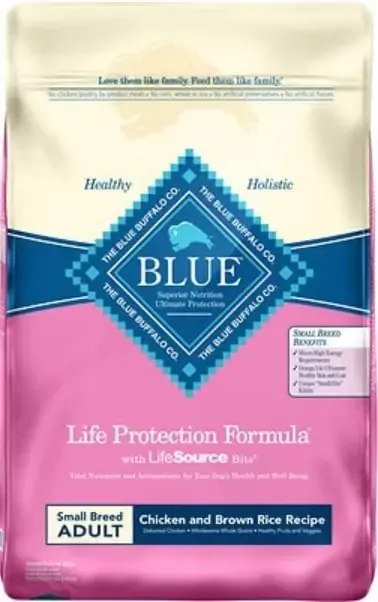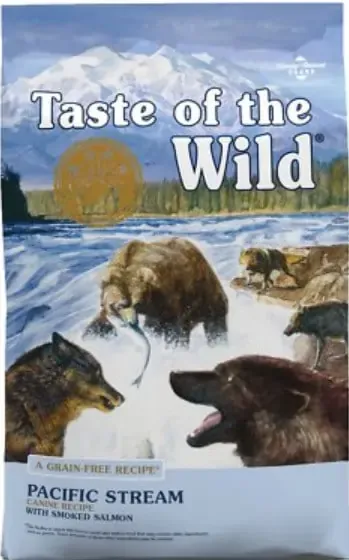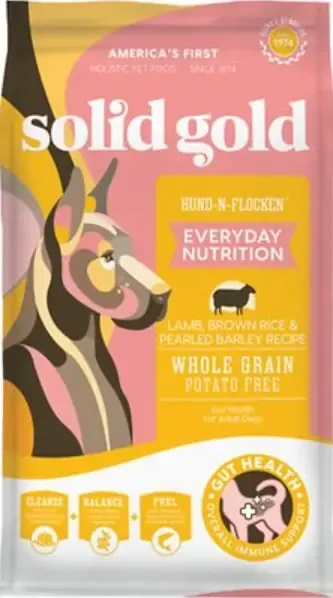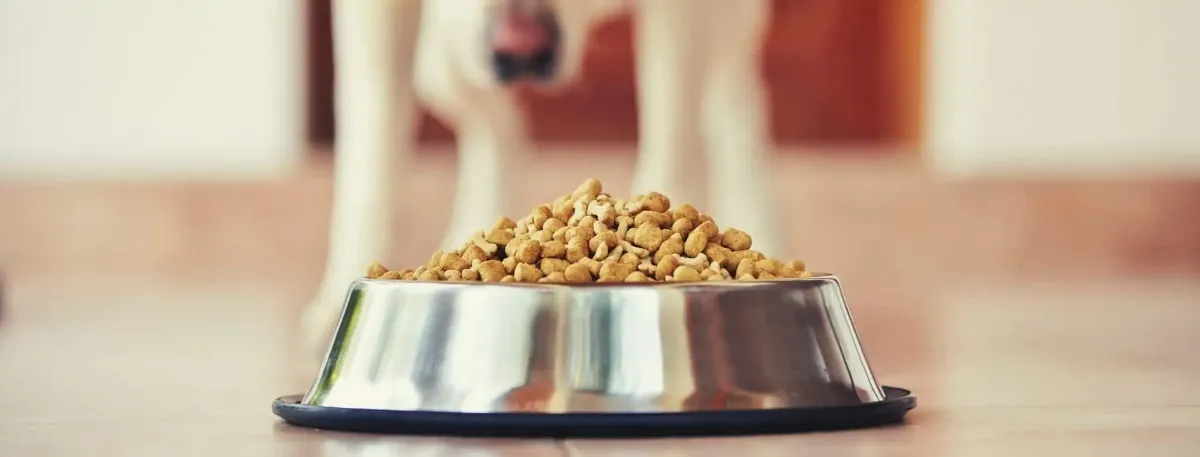
This is my detailed guide about the best low sodium dog food in 2022.
Sodium is a valuable and essential mineral in the diet. All dog food should contain it, and an average dog shouldn’t have a problem with excessive intake either. However, certain health conditions require a low-sodium diet and dog food that supports such a diet.
For my article, I did many hours of research to write in detail about the problem. Besides, I also collected 8 matching products.
In my opinion, The Honest Kitchen Whole Grain Beef Recipe is the best low sodium dog food. However, check out the other brands I included if you are interested in other options.
I am confident that by the end of my article, you will be able to decide which is the best choice for your pup.
Let’s start!
What are the best low Sodium dog foods?
- The Honest Kitchen Whole Grain Beef Recipe
- Wellness Complete Health Adult Lamb & Barley Recipe
- Purina Pro Plan Focus Adult Classic Sensitive Skin & Stomach
- Hill’s Science Diet Adult 7+
- Blue Buffalo Life Protection Formula Small Breed
- Earthborn Holistic Adult Vantage
- Taste of the Wild Pacific Stream
- Solid Gold Hund-n-Flocken Lamb, Brown Rice & Pearled Barley Recipe
8 best low sodium dog food
Below you will find my list of the best low sodium dog foods. Each contains high-quality ingredients and provides the maximum amount of nutrients your dogs need at low salt content.
I will always try to indicate the sodium content of the products. Sometimes these data will be expressed as a percentage, sometimes in mg/100kCal, depending on which data I found in my research.
You should consult your veterinarian before making a final decision. And remember, the diet change should be gradual.
The Honest Kitchen Whole Grain Beef Recipe
Key features:
- The first 5 ingredients are: Dehydrated Beef, Organic Oats, Organic Barley, Organic Flaxseed, Dehydrated Potatoes
- Whole-grain dehydrated dog food made with beef
- AAFCO complete recipe that is low calorie and low fat
- Free of by-products, fillers, GMOs, and artificial ingredients
- Easy to prepare
Sodium level: 0.17%
I really like Honest Kitchen, as it only and exclusively produces dehydrated pet foods, toppers, and treats. Also, this brand can say for itself that the products it makes are entirely human-grade.
For this reason, if I am looking for reliable dog food, I will always consider the offer of Honest Kitchen. Dehydration is a processing process that preserves the food, which then retains all nutrients to the maximum.
Serving is effortless. Add water to the product, and your dog can consume it immediately.
If you are looking for a healthy, nutritious, and delicious dog food that is low in sodium, be sure to consider this product from Honest Kitchen. 0.17% is suitable for inclusion in a rigorous sodium restriction diet.
The ingredients are also of outstanding quality. Dehydrated Beef and Dehydrated Eggs are high-quality protein sources that provide the necessary amino acids and other important nutrients.
Carbohydrates include complex and wholesome grains such as Organic Oats, Organic Barley, Organic Flaxseed, Dehydrated Potatoes, and Dehydrated Carrots.
Not only do they provide energy, but they also contain enough fiber, vitamins, and minerals. Flaxseed is an important source of omega fatty acids and is responsible for coat and skin health.
Thus, overall, it can be seen that the product provides a perfectly balanced diet for adult dogs.
Add to the benefits that the added fruits and vegetables support the immune system’s proper functioning due to their vitamin, mineral, and antioxidant content. Highly recommended product!
Other Honest Kitchen low sodium options:
Wellness Complete Health Adult Lamb & Barley Recipe
Key features:
- The first 5 ingredients are Lamb, Lamb Meal, Oatmeal, Ground Barley, Menhaden Fish Meal
- Provides whole-body nutritional support
- Free of GMOs, meat by-products, fillers, or artificial preservatives
- Contains omega fatty acids, antioxidants, glucosamine, probiotics, and taurine
- Crafted with premium proteins and wholesome grains
Sodium level: 63mg/100kCal
The Wellness product is an excellent lamb option for dogs who, for some reason, do not like or cannot eat chicken.
The recipe’s sodium content is 63mg / 100 kCal, which can be entirely incorporated into a moderate sodium restriction diet.
Examining the ingredients, we can’t complain either: Lamb, lamb meal, and menhaden fish meal are excellent sources of protein that dogs need for all muscle building and regeneration.
Carbohydrate sources are gluten-free whole grains that contain enough fiber and other useful nutrients.
The product does not contain added artificial preservatives and other harmful chemicals, fillers, etc.
Online reviews are very good for this product and are recommended by many veterinarians. You can be sure that the Wellness formula may be a perfect choice if your dog needs good quality low sodium dog food.
The recipe is also available in wet canned form.
Other Wellness low sodium options:
- Wellness Toy Breed Complete Health – 53mg/100kCal sodium
- Wellness CORE Grain-Free Small Breed – 69mg/100kCal sodium
- Wellness CORE Natural Large Breed – 69mg/100kCal
Purina Pro Plan Focus Adult Classic Sensitive Skin & Stomach
Key features:
- The first 5 ingredients are Water Sufficient For Processing, Salmon, Rice, Fish, Potato Protein, Corn Oil
- A complete and balanced diet
- Highly digestible ingredients
- Contains omega fatty acids
- Provides great texture, taste, and nutrition
Sodium level: 50mg/100kCal
With a sodium content of 50mg/100kCal, this product is for dogs who need to pay close attention to salt intake. Also, due to the canned wet form, it is suitable for proper hydration.
The recipe contains limited ingredients so that dogs can consume it with sensitive stomachs.
The primary source of protein is salmon, which is easily digestible and contains omega fatty acids. They are an excellent anti-inflammatory and have a good effect on the health of the skin and coat.
The primary source of carbohydrates is rice, which is a wholesome and complex grain. So this is a perfect option if you are looking for a low sodium diet for your dog.
Hill’s Science Diet Adult 7+
Sodium level: 0.26%
This product has been developed for adult dogs over 7 years of age. Its primary purpose is to support heart health. This is also seen at the sodium level. 0.26% is ideal for any dog who is required to have a low sodium diet for some reason.
Also, Hill’s product is great for providing all the nutrients your dogs need. Chicken and pork liver are not only excellent sources of protein, but they are rich in minerals and vitamins that can boost the immune system.
Carbohydrate sources include corn in addition to barley. Corn is high in energy, but some dogs may be sensitive to it. Be sure to consider this when choosing.
Additional vitamins and minerals will provide even more support for your aging dog, which can be the foundation for a healthy and long life.
Other Hill’s low sodium options:
Blue Buffalo Life Protection Formula Small Breed
Sodium level: 0.34%
With a sodium content of 0.34%, this Blue Buffalo product is perfect for dogs on a moderate sodium restriction diet. Besides, kibble size has been developed specifically for small breeds.
In terms of ingredients, this recipe fulfills what we expect from a Blue Buffalo product. Deboned Chicken, Chicken Meal, and Menhaden Fish Meal are easily digestible nutrient-rich protein sources. Meals also contain glucosamine and chondroitin, which have an excellent effect on the joints.
The primary sources of fat are Chicken Fat and Flaxseed. The latter also contains omega fatty acids, which promote brain, skin, and coat health, among other things. Menhaden Fish Meal also has a lot of omega fatty acids.
Carbohydrates include complex wholesome grains such as Brown Rice, Oatmeal, and Barley. You can be sure that your dog gets all the fiber, vitamins, and minerals he needs from these ingredients.
And the blend called LifeSource Bits, developed by Blue Buffalo contains plenty of additional vitamins, minerals, and antioxidants to keep your dog’s immune system working at maximum efficiency.
The added probiotic, in turn, supports the balance of the intestinal flora.
Earthborn Holistic Adult Vantage
Key features:
- The first 5 ingredients are Turkey Meal, Brown Rice, Pumpkin, Pearled Barley, Oatmeal
- Helps build muscle, bones, and teeth
- Guaranteed levels of antioxidant nutrients
- Contains highly digestible carbohydrate sources, vegetables, and fruits
- Contains L-carnitine, which helps burn fat and maintain lean muscle
Sodium level: 60mg/100kCal
If your dog is on a moderate sodium restriction diet, consider this product. The sodium content of 60 mg/100 kCal meets these requirements.
But that’s not the only reason it’s worth choosing this dog food. The ingredients provide a healthy and balanced diet for adult dogs that contributes to a healthy life.
The primary source of protein is Turkey Meal, which is a well-digested lean meat meal. It also contains glucosamine and chondroitin. These two minerals have a pretty good effect on the condition of the joints.
Brown Rice, Pumpkin, Pearled Barley, Oatmeal, Tapioca are complex carbohydrate sources, low glycemic, and truly nutritious. The product is not grain-free, but if your dog is not sensitive to grains, this shouldn’t be a problem.
The primary sources of fat are Canola Oil and Flaxseed, which add optimal amounts of fatty acids to the diet. Omega fatty acids are responsible for the healthy development of the skin, coat, and brain.
In addition to those listed so far, the product also contains added fruits, vegetables, vitamins, and minerals. Together, they are great for supporting your dog’s overall health.
Taste of the Wild Pacific Stream
Sodium level: 70mg/100kCal
The sodium content of 70mg/100kCal is not the lowest on my list, but it can be absolutely included in the moderate restriction diet. Also, this product (and the whole brand) is famous for its quality. That’s why I wanted to have it by all means.
The primary protein sources in the recipe are Salmon, Ocean Fish Meal, and Salmon Meal. This is very positive if you do not want to give your dog poultry or red meat.
Besides, fish are excellent sources of omega-3 fatty acids, which promote brain, skin, and coat health, and have anti-inflammatory effects.
The product is grain-free and contains carbohydrate sources such as Sweet Potatoes, Potatoes, Peas. These are high quality and well digestible ingredients that provide your dog with all the necessary nutrients.
In addition to fish oil, Canola Oil also contains omega fatty acids. This way, this product will be healthy and balanced.
Added fruits, vegetables, vitamins, minerals, and probiotics support dogs ’immune systems. This allows our four-legged friends to live long, healthy, and happy lives even on a low-sodium diet.
Other Taste of the Wild low sodium options:
Solid Gold Hund-n-Flocken Lamb, Brown Rice & Pearled Barley Recipe
Sodium level: 0.23%
Although I put it at the bottom of my list, the Solid Gold product is a pretty solid option if your dog is on a low sodium diet. This is because 0.23% meets the requirements of the moderate sodium restriction.
But that’s not the only reason I put this dog food on my list. The ingredients’ quality is impeccable, and they provide all the necessary nutrients that canines need to the maximum.
Listed as the primary source of protein, Lamb and Lamb Meal are excellent red meats that provide your dog with the amino acids needed to build and maintain muscle.
Brown Rice, Pearled Barley, and Oatmeal are easy-to-digest and wholesome grains that contain energy for your dog’s daily activities. They also provide a lot of fiber, vitamins, and minerals.
We cannot complain about the other ingredients either. The primary sources of fat are Chicken Fat and Salmon Oil. These give the recipe a balanced omega fatty acid profile and maximize the promotion of your dog’s coat and skin.
The recipe also contains all kinds of fresh fruits, vegetables, vitamins, and minerals. Thanks to these, your dog will not only follow a low-sodium diet but will also be healthy. Be sure to consider this product!
Finding the best diet for your dog is not easy. You have to consider several aspects, e.g., activity, breed, age, health condition, etc. If you want to make the best decision possible, check out my comprehensive guide on how to choose the best dog food.
What are the recommended levels of sodium for dogs?
Sodium is an essential mineral that plays a key role in many bodily processes. Examples are the normal functioning of nerve and muscle cells.
In fact, you should generally not be afraid of your dog’s excessive sodium intake. According to a 2008 study, dogs can adapt to high sodium levels.
Excess is excreted in the urine. So you don’t have to worry about your dog developing high blood pressure due to excessive sodium intake.
But as I mentioned, this is only the case for healthy dogs. Certain health conditions require some degree of restrictions. I will write about these conditions later, but now, here are the different sodium level requirements:
- No sodium restrictions: >100mg sodium/100kCal , or >0.5%
- Mild sodium restriction: 80-100mg sodium/100kCal, or 0.35-0.5%
- Moderate sodium restriction: 50-80mg sodium/100kCal, or 0.2%-0.35%
- Marked sodium restriction: 40-50mg sodium/100 kCal, or 0.15-0.2%
- Extreme sodium restriction: 20-40 mg sodium/100 kCal, or 0.075-0.15%
Two things complicate the situation. On the one hand, the AAFCO guidelines do not specify a maximum sodium intake for dogs.
This is helped by the fact that the National Research Council of the National Academies guidelines, on the other hand, contain a maximum value for the sodium intake of dogs.
According to this, a dog weighing 30 pounds with average activity can consume 2 grams of this mineral per day.
This isn’t easy to convert to larger dogs because bodyweight does not linearly increase the amount of sodium your dog can consume. However, this number can be a good starting point.
Another difficulty is that manufacturers do not always indicate the sodium content of products on the packaging. In this case, it is safest to call them. I gave the percentages because it’s usually a lot easier to figure out.
It is important always to consult a veterinarian or dog nutritionist regarding sodium restrictions.
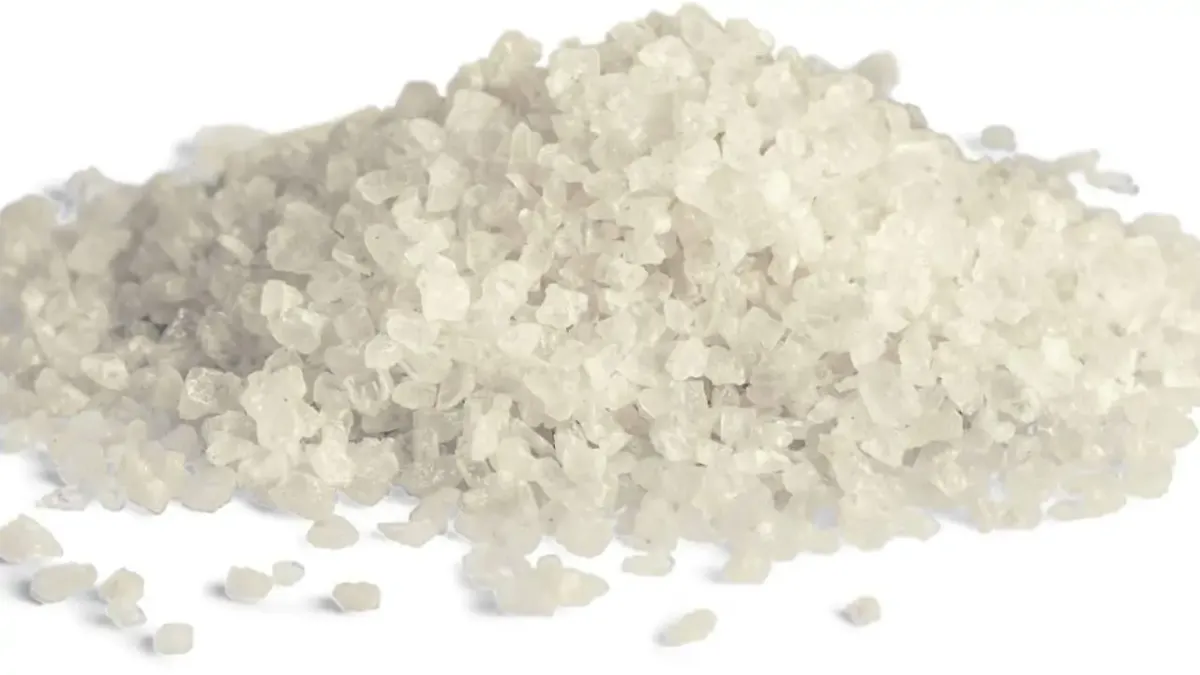
Health Conditions that Require Low-Sodium Dog Foods
As I mentioned, there is no association between high blood pressure and salt intake in dogs. However, some diseases require a low-sodium diet. I will write about these below.
Heart problems
Congestive heart failure is a heart disease in which you have to feed your dog a low-sodium diet. This is true even if the problem has not yet developed, but there is a risk. In heart disease, the body of dogs cannot get rid of excess sodium. This causes water retention, which also has a detrimental effect on other organs. The consequence can even be fatal.
Liver Disease
The liver is the most effective detoxification and waste removal system in the body. Also, it has several key roles in the functioning of the body. If a dog has liver disease, this organ is unable to perform its function. This can have severe consequences. A low sodium diet can help a lot with the problem.
Kidney Disease
One of the kidneys’ functions is to filter out and excrete minerals (such as sodium) in the urine. If this vital paired organ has a disease (e.g., kidney disease or renal failure), then your dog will not be able to remove excess sodium from his body. It can also lead to excessive water retention, which can even be fatal.
Ascites
The diseases mentioned above can result in the leakage of blood and other fluids into the abdominal cavity. These fluids can accumulate, which hurts the dog’s internal organs. This is another reason why a low-sodium diet should be considered in such cases.
What about salt toxicity in dogs?
As you can see, you need to be careful about how much salt your dog consumes for certain diseases.
However, a large amount of sodium intake at one time can be a problem even for healthy dogs. This is salt toxicity.
The lethal dose for canines is about 4g/kg body weight. Smaller amounts can cause symptoms. These include vomiting, tremors, and seizures. If you notice any signs of salt toxicity in your dog, contact your veterinarian immediately.
Try to avoid the problem by not giving your dog foods high in salt.
Are there any benefits to a low sodium diet in dogs?
If your dog has any of the health conditions mentioned above, it is inevitable to reduce the diet’s sodium content. However, a low sodium content may be an advantage in other cases.
Proper hydration
The salt has an outstanding water absorption capacity. For this reason, your dog should try a low-sodium diet for adequate hydration.

Senior dogs
Elderly dogs are more prone to various diseases such as organ diseases, decreased muscle and nerve function, etc. The low salt content can help prevent these conditions from developing or getting worse.
Of course, keep in mind that the diet should include a minimum sodium level for healthy dogs. (100mg sodium/100kCal, or 0.5%)
What are the types of low sodium dog food?
Overall, it can be said that there are also the same types of low sodium dog foods as other dog foods. These are the following:
Dry food
This is perhaps the most popular type. It is manufactured in dry kibble form and has a very crisp texture. In general, this is the most economical version and has a longer shelf life than the others. It also helps keep your dog’s teeth clean. However, this is not the best choice for dental problems.
Wet food
Wet foods are very popular with dogs as they have a much more tempting texture. This type of food is also the right choice if your four-legged friend has some dental problems. These products contain a lot of moisture, so they help with hydration.
However, due to their high moisture content, their shelf life is also significantly shorter. You can buy them in cans or packages.
Treats
There are several forms of treats, depending on the intended use. More importantly, you should find a product that is low in salt. Look for natural and whole ingredients on the packaging. Examples include real meats, fruits, and vegetables.
The worst treats can be delicious, but they do contain a lot of harmful ingredients.
How to choose the best low sodium dog food?
Basically, good low-sodium dog food should have a similar nutritional value as other products. The main difference, of course, should be in the salt content.
You also need to know what your dog needs according to breed, life stage, and size. High-quality dog food has the following characteristics:
Protein content
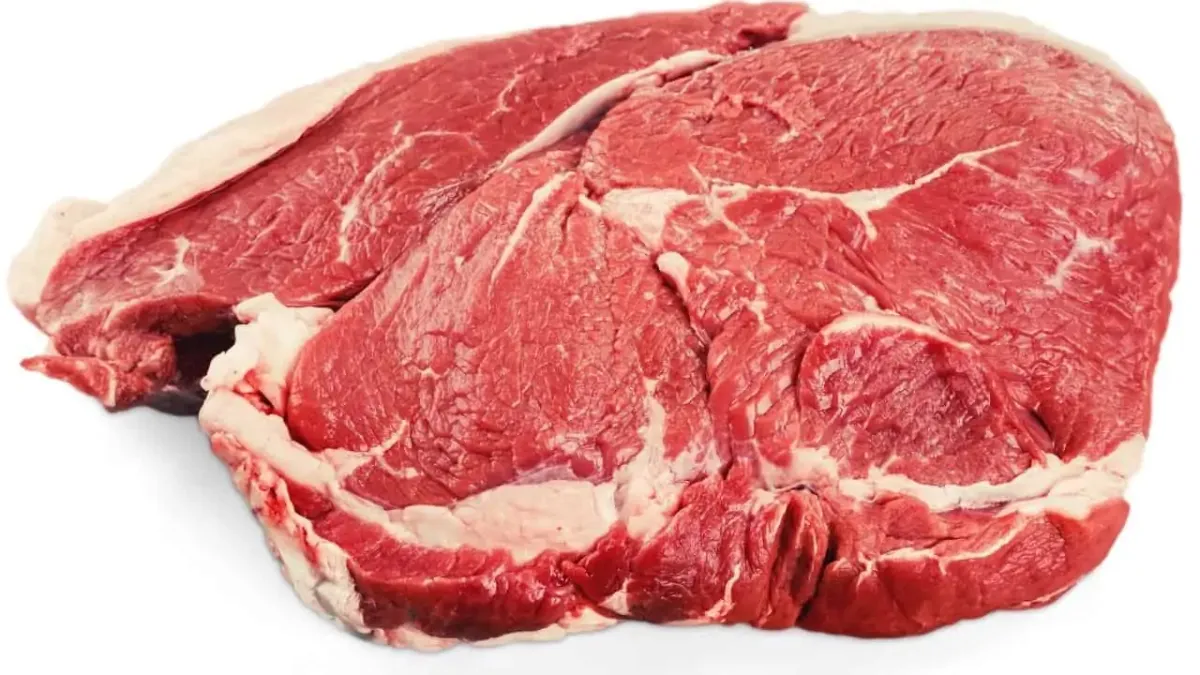
The protein content is the most important factor you need to consider when looking for the best dog food. Dogs are omnivores, meaning they can digest various macronutrients. Nevertheless, the primary ingredient must be some source of protein.
Meats are clearly the best for this. Chicken, turkey, lamb, beef, and fish are all high-quality protein sources that provide dogs with the right amount and quality of amino acids.
It is important to note that there are three popular forms of meat. Real meat, meat meal, and meat by-product. In unchanged form, real meat gets into the food with minimal processing while preserving nutrients.
Meat meals are not preferred by many. However, you should know that these are concentrated, minced, and moisture-free forms of real meat. That is, their quality is usually no worse than real meat.
Meat by-products contain a lot of glucosamine and chondroitin. These are the “vitamins” of the joints. However, meat by-products cannot be considered a complete and quality source of protein, as in many cases, they consist of parts of animals such as tendons, organs, etc.
Make sure the meat meal and meat by-product are named and properly labeled on dog food. Poultry meal and the poultry by-product are not very reassuring. Chicken meal and chicken by-products are more of what you should choose.
Long story short, strive to choose a product whose first ingredient is real meat or meat meal.
Carbohydrate content
Dogs can utilize carbohydrates and gain energy from them. However, the quality of carbohydrates is at least as necessary as that of proteins. Complex and whole carbohydrates contain plenty of useful fiber, vitamins, and minerals.
The sensitivity or allergy of dogs can determine the source of carbohydrates chosen. Some dogs are sensitive to grains for example. For them, you should look for grain-free recipes.
Other nutrients
Vitamins, minerals, antioxidants, and other useful nutrients are important supplements to a dog’s diet. These are natural sources of fresh fruits and vegetables. But some products also contain added vitamins and minerals.
Other useful supplements include fish oil, probiotics, and glucosamine. There can be significant differences between brands, so you should always check the ingredients listed on the packaging.
Controversial ingredients
Artificial ingredients such as preservatives, flavor enhancers, and colorants should be absolutely avoided in a dog’s diet. This is because they indicate that the product is of low quality and can also cause allergic reactions in many dogs.
Your dog won’t appreciate the color of the food anyway. And if a product contains artificial flavors, it is conceivable that the ingredients have not been carefully selected.
Manufacturing countries
In most cases, the packaging of the products indicates where they were made. The best countries are the USA, Canada, Australia, New Zealand, and Western European countries. These are stringent regulations for production processes. Thus, there is less chance that the chosen product will contain harmful substances or impurities.
Individual needs
As with humans, individual differences can occur in dogs. Examples are various allergies, sensitivities, or other diseases. Clarify these conditions with your veterinarian and choose low-sodium dog food accordingly.
Ingredients to avoid for dogs on low sodium diets
When your veterinarian recommends a reduced sodium intake for your dog, there are some ingredients you should avoid. These are the following:
- Nitrates: Sodium nitrate is a preservative found in many processed types of meat (e.g. bacon or ham). These should not be included in your dog’s diet as they can raise the level of sodium in his blood.
- Monosodium Glutamate: It is a flavor enhancer that is high in sodium. Avoid it. Anyway, which dog food needs to be flavored is probably not very good quality.
Human foods to avoid
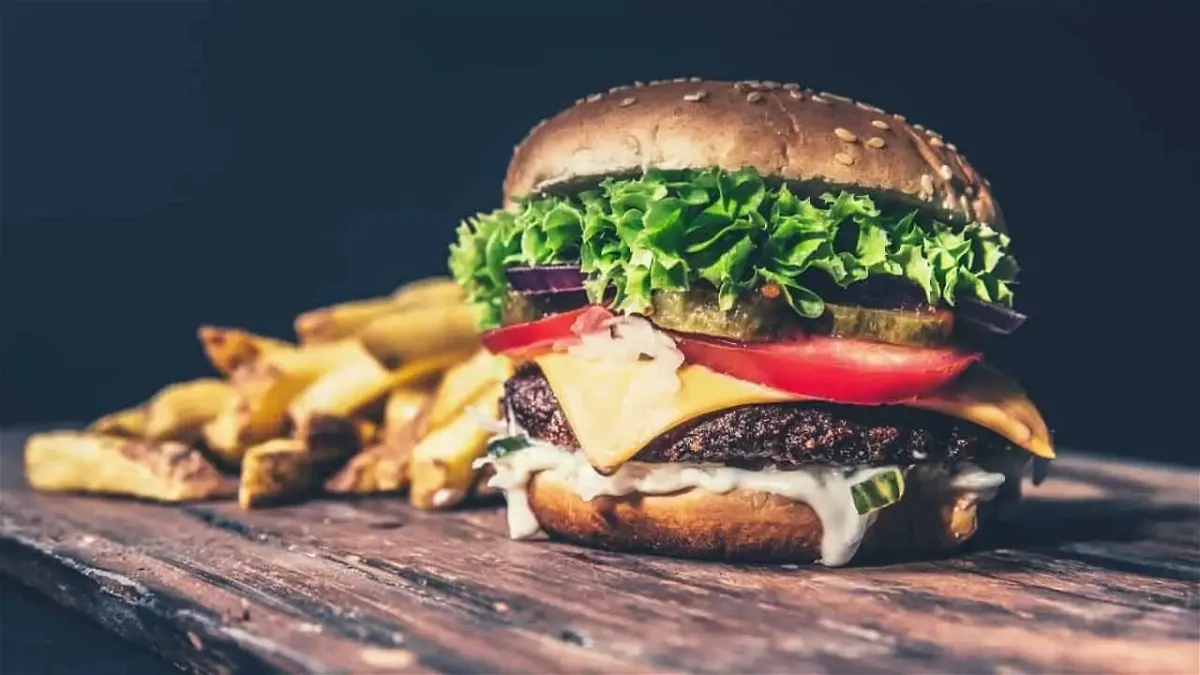
I do not support giving human food to our dogs. On the one hand, they can be a danger to our four-legged friends in many cases. On the other hand, human foods usually contain more salt, which can be unhealthy for dogs. This is especially true for processed foods. You should definitely avoid the following:
- Potato chips
- Sausages
- Bacon
- Other salted meats
- Pizza
- Bread
- Sauces (Soy sauce, ketchup, etc)
- Cheese
- Popcorn
- Human biscuits
- Canned vegetables
How can you identify low-sodium dog food?
The products listed in my article are excellent options if you want to provide your dog with a low sodium diet. However, it doesn’t hurt if you’re also aware of how to identify these dog foods.
The key is to look at the label and look at the sodium content. Various nitrites, salts, and preservatives can also contain sodium.
It is also a good idea to ask your veterinarian to recommend a good recipe.
In general, weight management and heart health formulas have lower sodium content than other commercial dog foods. Therefore, if you start your product search with them first, you will probably be on the right track.
Frequently asked questions about low sodium dog foods
How can I switch my dog’s diet to low sodium?
The digestive system of dogs prefers consistency. For this reason, any dietary change should be careful and gradual. A properly executed gradual switch will take 1-3 weeks. It is best to seek the advice of your veterinarian about all this.
Can dogs have low sodium?
Higher salt intake doesn’t have any harmful effect on average dogs. Our dog has a medical condition such as kidney, liver, and heart diseases. In such cases, it is important to reduce sodium intake. Be sure to talk to your veterinarian about this.
My final choice
Once you have discussed your dog’s diet with your veterinarian about the sodium levels, you can start looking for the right products.
Low sodium content is not enough. The quality of the ingredients is at least as necessary. The health of our dogs is based on the best possible nutrition.
I found The Honest Kitchen Whole Grain Beef Recipe to be the best of the options listed here. Not only does it offer a solution to the problem detailed in my article, but it is one of the healthiest dog foods on the market thanks to its premium ingredients and processing.
By the way, I strongly recommend the other options as well, as I have tried to be as careful as possible in my research.
Remember to change your dog’s diet gradually and consult your veterinarian.





